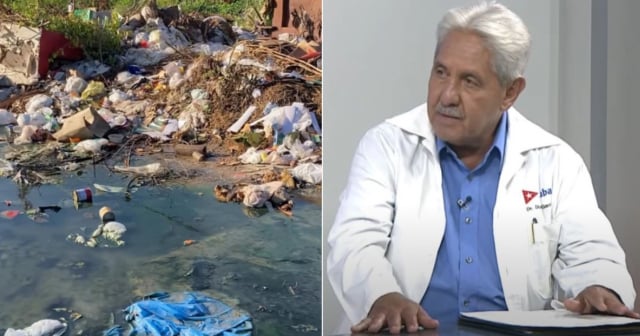Francisco Durán García, national director of Hygiene and Epidemiology, appeared this Wednesday on Cuban Television to report on the uncontrollable increase of dengue and the Oropouche virus in the country.
Durán García explained that dengue is still present in 13 provinces, but the number of municipalities is increasing: 45, and 50 health areas.
He specified that there is a considerable increase in the incidence rate, mainly in Santiago de Cuba, Havana, Guantánamo, and Camagüey, which he cited as the most affected provinces right now.
The expert said that there are "numerous cases admitted" with dengue in the country, noting that some are in intensive care. In neither case did he provide figures.
As has been said on previous occasions, the epidemiologist recommended that at the first symptoms one should go to the doctor, and reiterated that dengue is indeed a disease that can have a tendency to complications.
In the case of the Oropouche virus, there is transmission in 15 provinces, 109 municipalities, and 197 health areas.
There is also an increase in cases, although in the case of that disease the complications are lesser, although Durán García stated that there are some hospital admissions due to that virus.
She especially urged pregnant women to protect themselves from mosquito bites, as there have been cases of "vertical transmission" in countries like Brazil, meaning from mother to fetus, which has resulted in fetal death or congenital malformations in some cases.
In general, Francisco Durán García admitted that right now the mosquito infestation in Cuba "is very high, very extensive."
He alluded to factors that worsen the situation such as the heat, the rains, and "unfortunately 'sanitation' is added, which must be mentioned and is of great importance," he said euphemistically in reference to the severe crisis in waste collection affecting Havana and other provinces in the country.
Finally, Durán García invited Cubans to use "mosquito nets and repellents" as a way to avoid being bitten by the mosquitoes that cause both diseases.
On previous occasions, Durán García has emphasized the need to see a doctor immediately at any symptoms associated with headaches, joint pain, vomiting, diarrhea, and high temperatures, as it is essential to make an accurate diagnosis due to the circulation of both arboviruses, which have quite similar symptoms.
A few days ago, Dr. Ileana Morales Suárez, director of Science and Technological Innovation at MINSAP, indicated that since May, nearly 12,000 suspected cases of Oropouche had accumulated, some of which have shown neurological complications and clinical manifestations not previously described in the medical literature.
Health authorities have emphasized the importance of maintaining a clean environment and eliminating mosquito breeding sites, a key measure to prevent the proliferation of these vectors, although the regime has acknowledged that it lacks resources and fuel to promote fumigation and control campaigns.
According to the newspaper, the Immunoassay Center is currently trying to develop a diagnostic kit for Oropouche, while the Finlay Institute is evaluating the feasibility of developing a vaccine for the prevention of this disease.
What do you think?
COMMENTFiled under:
